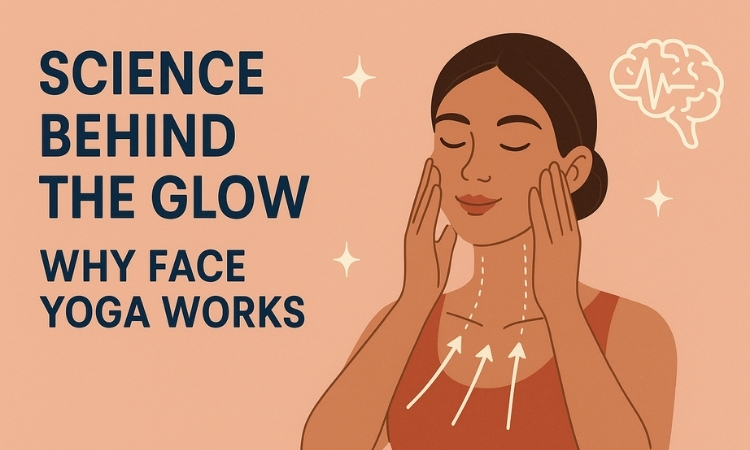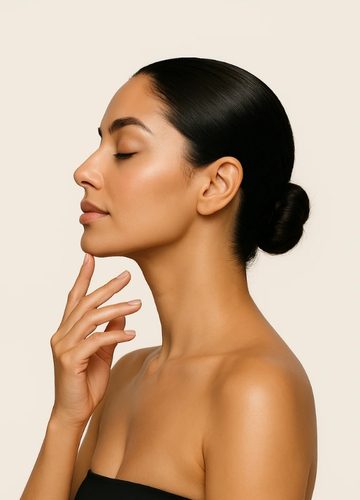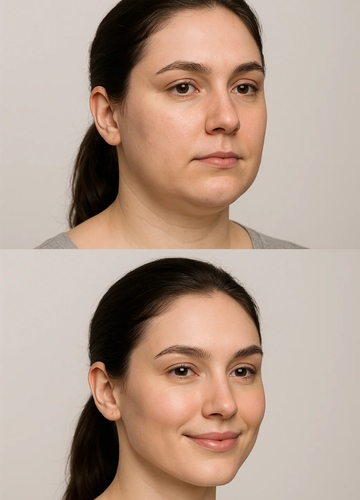
In the world of wellness and beauty, face yoga is more than just a trend—it’s a growing self-care movement backed by emerging science and timeless principles of anatomy and mindfulness. But beyond the buzz and before-and-after photos on social media, a key question remains: Why does face yoga work? What’s the actual science behind the firmer cheeks, lifted brows, and glowing skin? Is it simply facial movement, or is there more to the story? In this deep dive, we’ll explore the scientific foundations of face yoga—how it impacts your muscles, skin, nerves, and mind—and why a few minutes of daily practice can lead to visible and long-lasting transformation.
Let’s start with the basics: your face has around 42 individual muscles, most of which are voluntary but rarely exercised intentionally. Unlike muscles in your arms or legs, facial muscles are directly attached to the skin (not bones). This unique structure means that when facial muscles contract or lift, they also move the skin, giving you expressions—and over time, wrinkles. Face yoga targets specific muscles that are often neglected. When you activate and strengthen them, they increase in volume and firmness, which helps support the skin better. This increased support can reduce the appearance of sagging, fine lines, and drooping.
🧠 Think of it like resistance training for your face. Toned muscles act like a natural filler, giving the skin a plumper, more youthful look—without needles or filters.
One of the most immediate effects of face yoga is the boost in blood flow. Just like physical activity makes your skin glow, facial exercises improve microcirculation—the blood flow through the tiniest vessels just below your skin. Better circulation delivers more oxygen and nutrients to your skin cells. This stimulates: Collagen and elastin production Skin repair and regeneration Removal of toxins through the lymphatic system The result? A healthier skin barrier, more even tone, and a natural glow—what many practitioners call the “face yoga flush.”
Just as your body remembers how to balance, squat, or dance, your face develops muscle memory over time. This is especially true for repetitive movements like frowning, furrowing brows, or clenching your jaw—habits that can deepen wrinkles or misalign facial posture. Face yoga introduces new muscle patterns to counteract these habits. For example: If your eyebrows tend to droop, regular lifting exercises retrain your frontalis muscle to stay lifted. If you hold tension in your jaw or temples, massage techniques release these zones and create new neuromuscular pathways. With practice, your face begins to adopt a more open, lifted, and symmetrical posture—even when at rest.


Another key benefit of face yoga isn’t about your muscles—it’s about your mind. Face yoga activates the parasympathetic nervous system, also known as the “rest and digest” state. This slows your heart rate, calms your mind, and reduces stress hormone (cortisol) levels. High cortisol contributes to skin inflammation, acne, and premature aging. Even just 5–10 minutes of slow breathing combined with facial massage can: Improve sleep Reduce jaw clenching and teeth grinding (bruxism) Decrease stress-related breakouts Restore a natural skin barrier function
🌿 In this way, face yoga isn’t just about looking better—it’s about feeling better, too.
© 2025 Elva Face Yoga . All Rights Reserved.